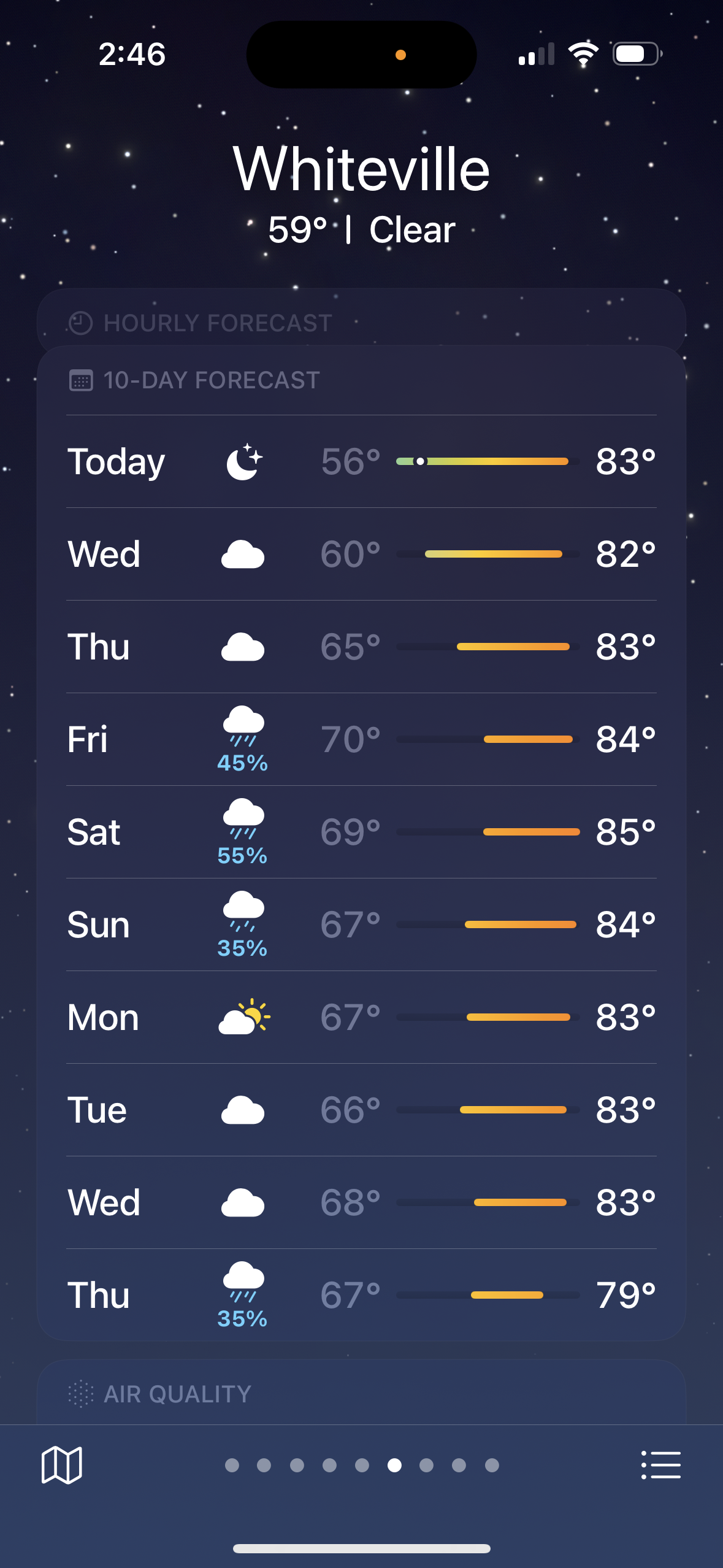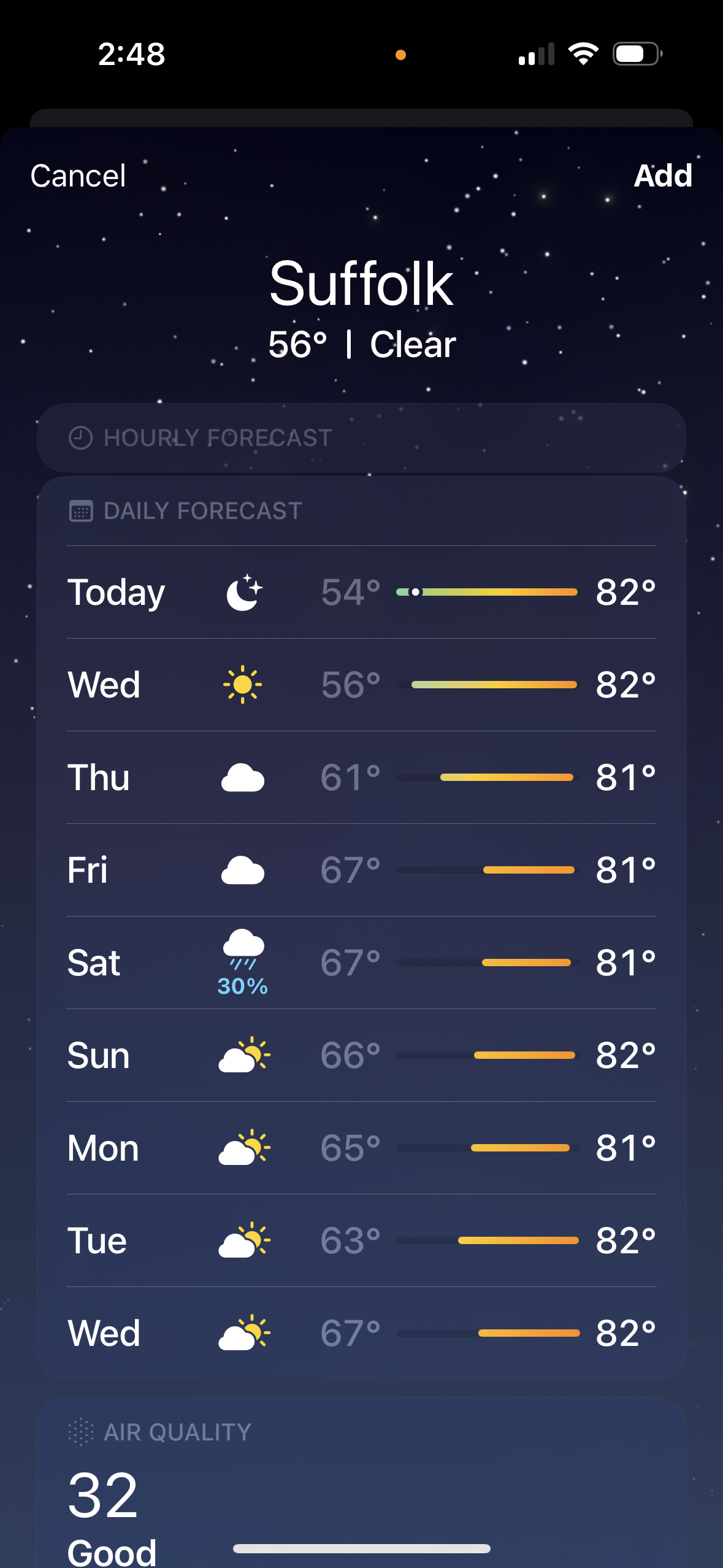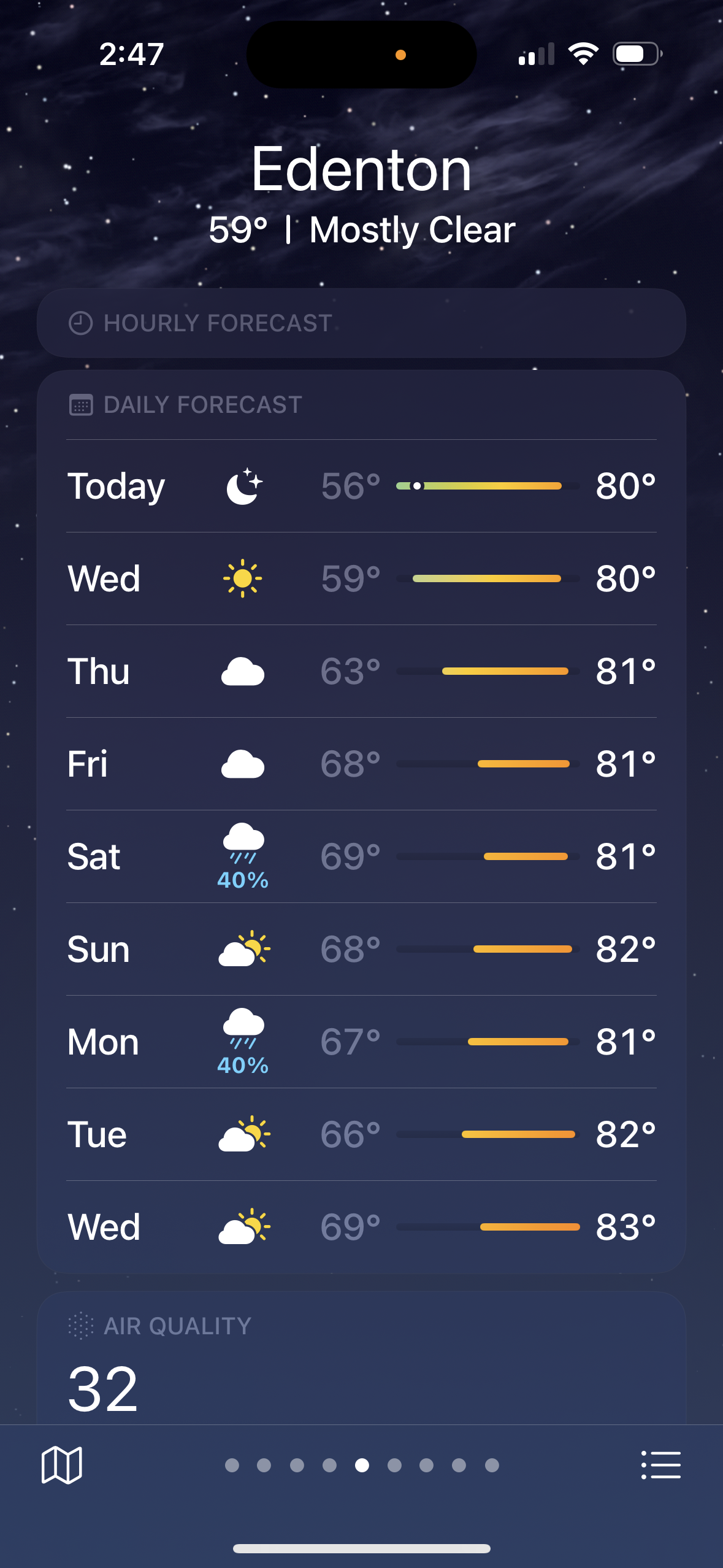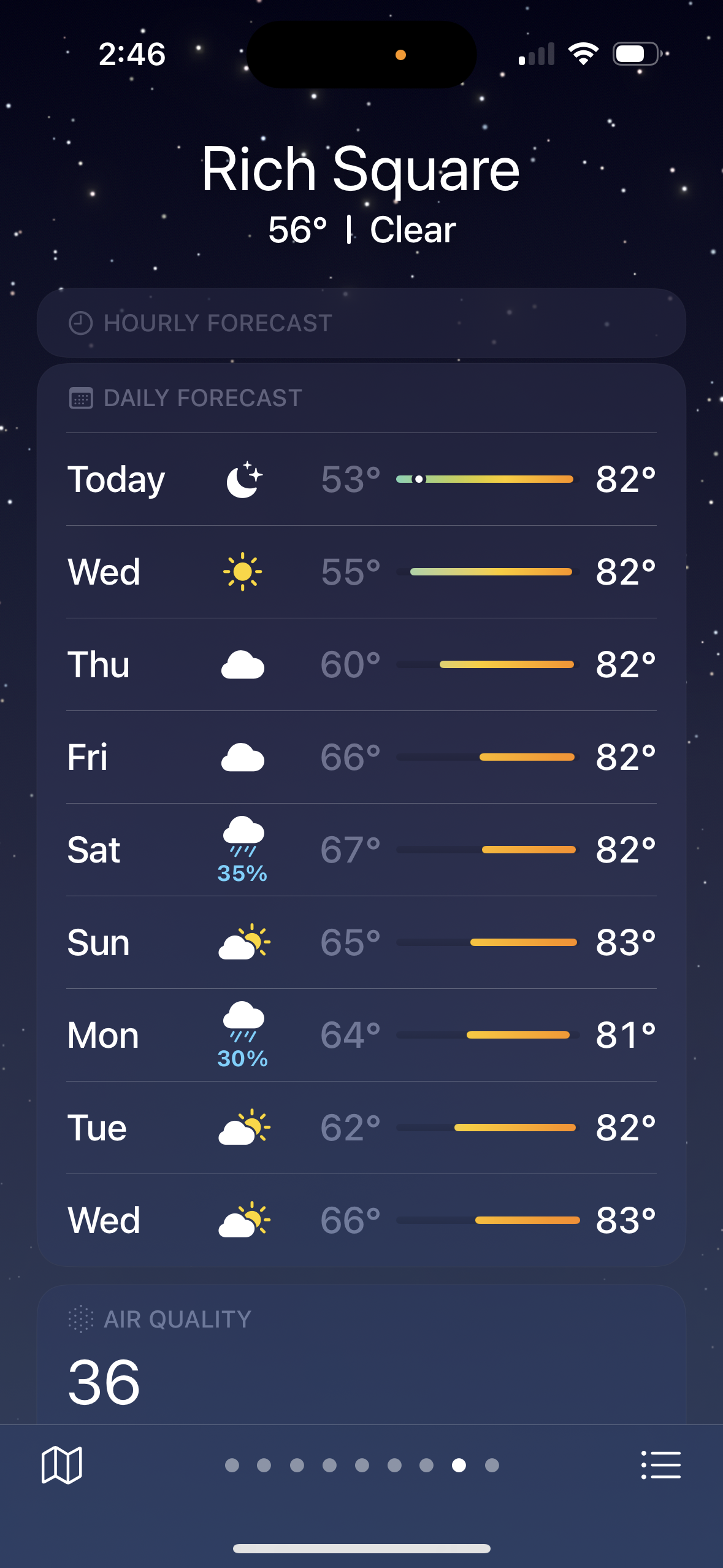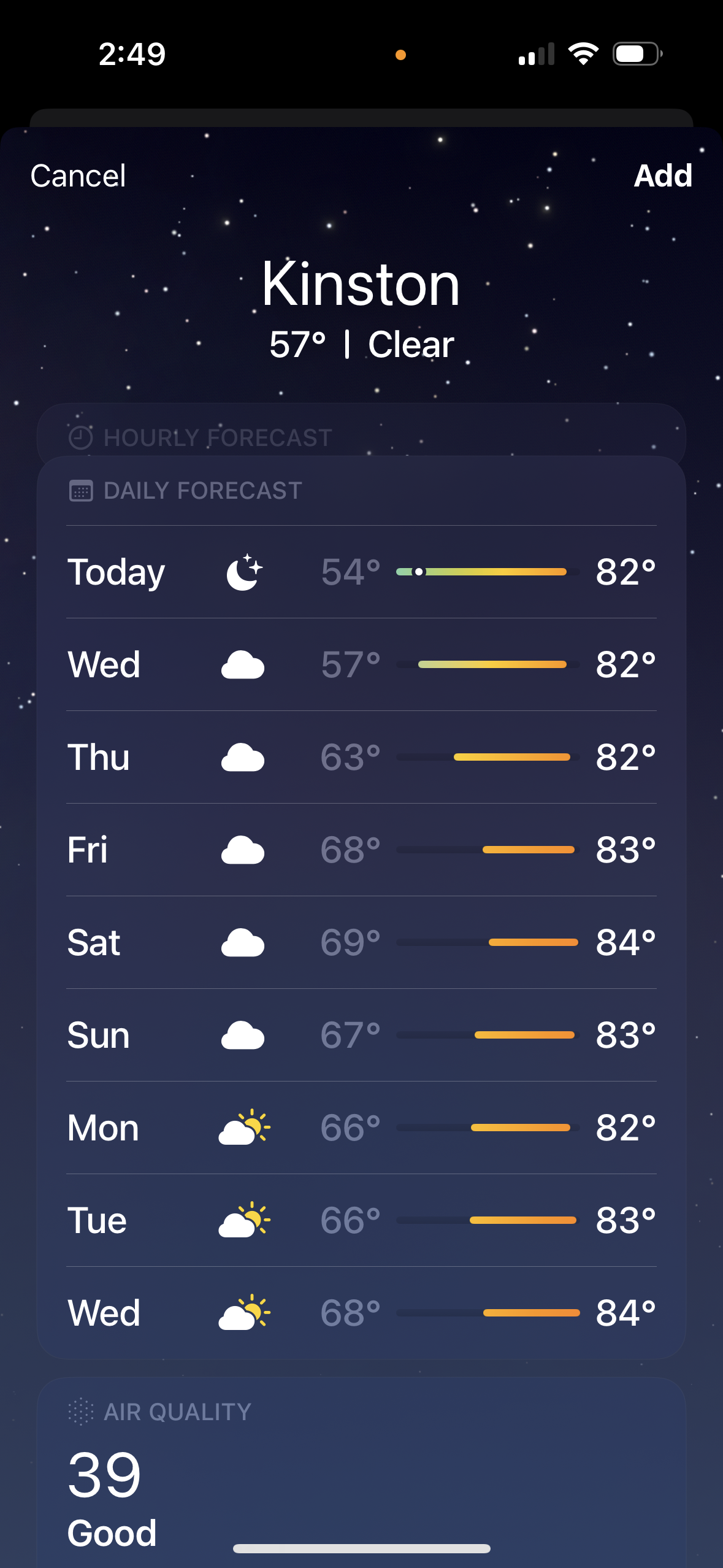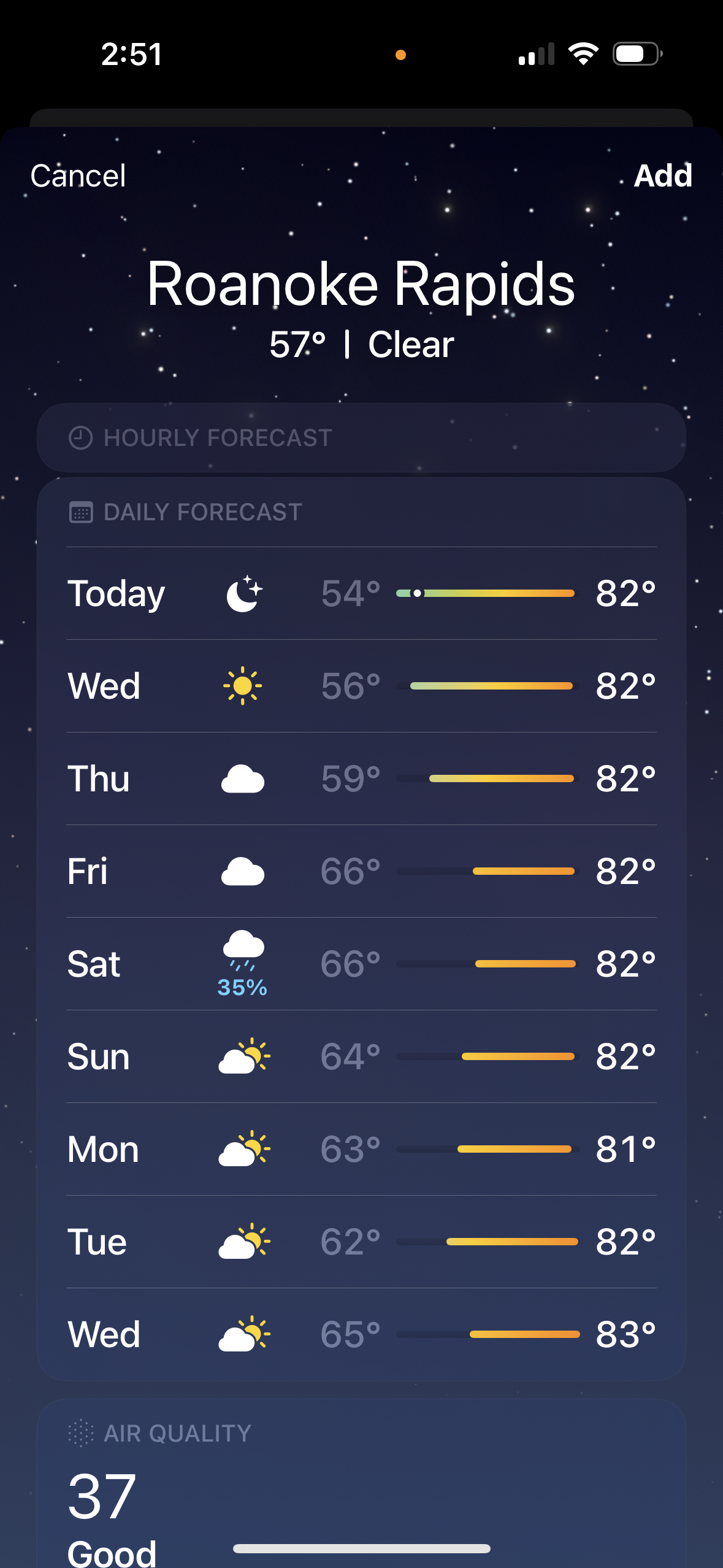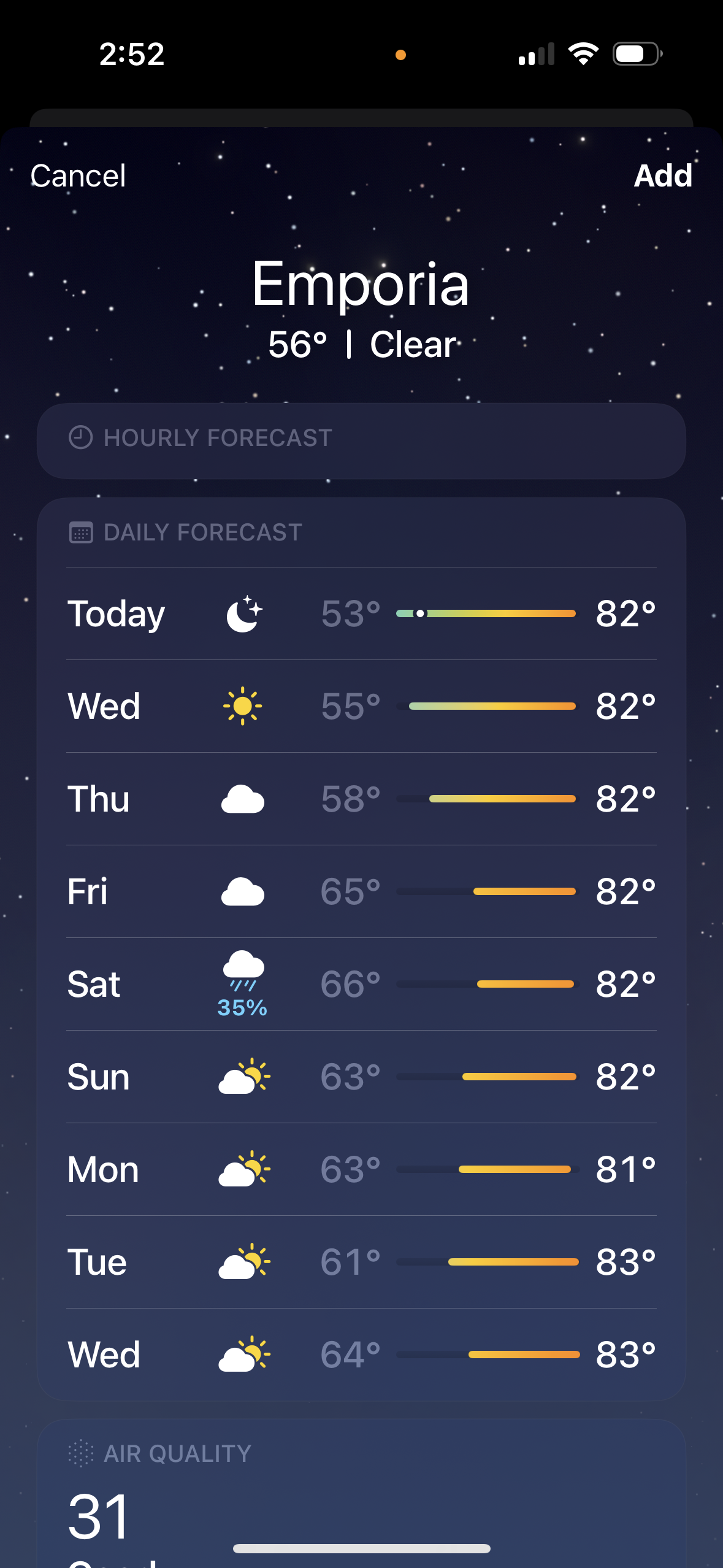Weather Forecasts Across the Upper V-C Region Peanut Notes No. 226 2024
go.ncsu.edu/readext?1026158
en Español / em Português
El inglés es el idioma de control de esta página. En la medida en que haya algún conflicto entre la traducción al inglés y la traducción, el inglés prevalece.
Al hacer clic en el enlace de traducción se activa un servicio de traducción gratuito para convertir la página al español. Al igual que con cualquier traducción por Internet, la conversión no es sensible al contexto y puede que no traduzca el texto en su significado original. NC State Extension no garantiza la exactitud del texto traducido. Por favor, tenga en cuenta que algunas aplicaciones y/o servicios pueden no funcionar como se espera cuando se traducen.
Português
Inglês é o idioma de controle desta página. Na medida que haja algum conflito entre o texto original em Inglês e a tradução, o Inglês prevalece.
Ao clicar no link de tradução, um serviço gratuito de tradução será ativado para converter a página para o Português. Como em qualquer tradução pela internet, a conversão não é sensivel ao contexto e pode não ocorrer a tradução para o significado orginal. O serviço de Extensão da Carolina do Norte (NC State Extension) não garante a exatidão do texto traduzido. Por favor, observe que algumas funções ou serviços podem não funcionar como esperado após a tradução.
English
English is the controlling language of this page. To the extent there is any conflict between the English text and the translation, English controls.
Clicking on the translation link activates a free translation service to convert the page to Spanish. As with any Internet translation, the conversion is not context-sensitive and may not translate the text to its original meaning. NC State Extension does not guarantee the accuracy of the translated text. Please note that some applications and/or services may not function as expected when translated.
Collapse ▲The 2024 harvest season has shaped up to be one where patience will be critical in realizing optimum yields and market grades. Yesterday, I posted information on the impact of low temperatures on advances in pod maturity. It is considerably earlier than normal, at least in more recent history, to be asking this question. But here we are.
Below you will find screenshots from my phone with the outlook for low and high temperatures for the next week (including today, September 10) for several locations. While these numbers are general for an area or town, they suggest that we may dodge the 2-day, high 40s-threshold for not seeing further advances in maturity. When this threshold does hold true (we experienced it around September 20-21 in 3 of the past 4 years,) further maturation of pods has been slow or non-existent.
Accumulation of heat units will be very modest over the next week or so. But there is a chance for the crop to become more mature. It is hard to know how quickly we will get closer to what we would like to see.
This is always a stressful time. There are some challenging decisions to make as we move through the next few weeks. I encourage you to be as patient as you can. But I know you have realities that are very different from a research/extension person at NC State.
We always consider tropical weather when we make choices on when to dig pods and invert vines. Frost is an important consideration too. While weather events can change quickly, tropical weather seems relatively calm right now, and frost is not on the horizon. If you can stand it, try to go from week to week with as much patience and flexibility as possible.



